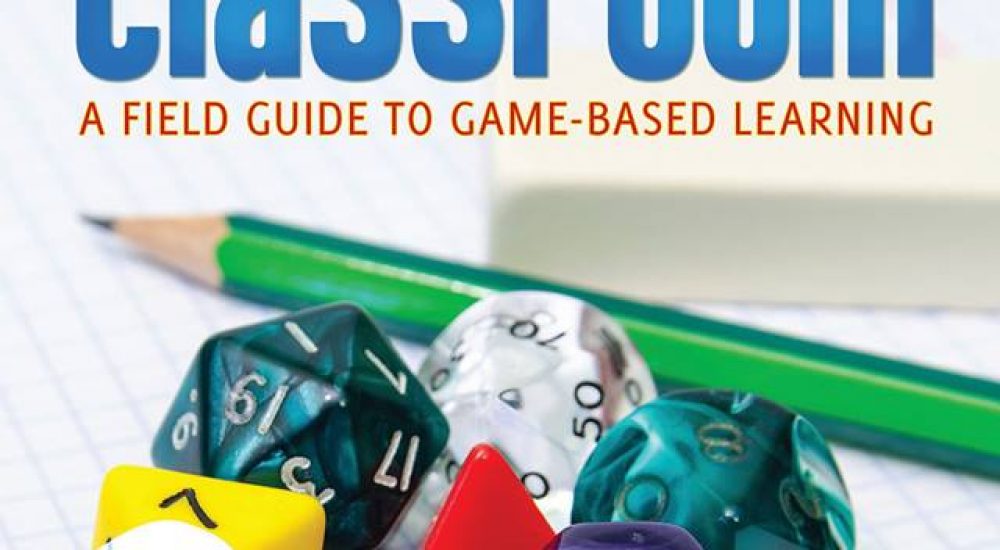Children—and adults, too—enjoy playing games.
Doing so is not just fun; playing games is intrinsically engaging. Game play is satisfying work.
The fact that games can be used to teach is considered a trend in education; yet, its utility as a teaching tool has been around for well over a millennia! King Tut was entombed with the board game Senet, a game about the afterlife (Senet means passing). Germany used the Chess-variant Kriegspiel to learn battlefield strategies prior to World War I. Snakes and Ladders was played in India to teach Jainism concepts.
Games for Learning
Game-based learning, or GBL, has become increasingly prevalent in classrooms. As an initiative, it has received backing from the U.S. Department of Education, as well as foundation funders. To a teacher, I was initially hesitant to embrace the “next big thing” in education reform. However, when I researched information for my book, I discovered a network of truly impassioned developers and academics that simply wanted to bring more fun and better authentic experiences to students. It was actually a step away from the climate of high stakes testing.
Games are designed in a similar fashion to a teacher’s lessons. First, a challenge is presented. For a teacher, this may be a concept to teach, like the separation of powers in the U.S. government. To a game designer, the conceptual challenge would be to engage the student/player into a situation where his or her decisions are checked and balanced, just like what the Constitution dictated.
The civics activity described above is a step to turn a lesson into a game. For a classroom game, it is not necessary to have a “winner.” The intrinsic fun is the experience, not the goal. Like the saying, life is about the trip, not the destination!
What happens next is the long process of iterative design. In the above example, a prototype would be created to meet the goal of simulating separation of powers. One solution might be to devise a three-player, role-playing game, with a student representing the executive, legislative, and judicial branches of government. This can be done with cards or tokens. In fact, many video games are paper-prototyped this way, working out the mechanics first (mechanics are game actions, like trading, bluffing, or jumping). The next step involves the collection feedback from participants. Known as a playtest, players are asked about the clarity of rules, as well as how fun the game was. It is important to test with the intended audience of a game.
Game designers put fun before content. Scrabble needs to be fun; otherwise, it would be a rote vocabulary review, not a game. Too often, school is not fun; rather, it can be a chore, with grades as the extrinsic motivator. While not every lesson needs to be fun, it is a concept that should be considered. Think about other media that delivers messages, like books, theater, and film. Each considers entertainment alongside content.
The separation of powers lesson is smartly turned into a classroom game in iCivics’ What’s for Lunch lesson plan. In it, student groups take on the role of lead chefs (executive branch) menu writers (congress), and nutritionists (judges). Not only does this activity simulate a concept in a game-like fashion, it imbues students with an emotional connection to how bills become laws.
Students as Designers
In my practice, I have found it important to turn students into game designers. I teach the fundamentals of what games are: interconnected systems of rules and goals. Change one part of the system and everything is disrupted. Think about what would happen is you added an extra letter or player to Tic-Tac-Toe. The entire game, as system, changes.
Students can turn concepts into paper-based games, which can later become digital games. (There are plenty of free toolsets, including Scratch, from MIT). After student groups create a prototype, I have them conduct a “blind” playtest with another student group. In other words, they must watch others play their creation and follow their written rules (which is informational text, a Common Core-assessed standard). Finally, students are given a chance to iterate their designs.
Teaching students to be game designers is an authentic, real-world lesson. It reinforces competencies such as persistence, design thinking, and systems thinking. Furthermore, students can critique subsequent game-based lessons, thus encouraging meta-cognition, or thinking about learning.
Join me at the Master Class I will be presenting at the BOOST Conference on Wednesday, April 29 from 3:45pm-5:15pm. This interactive presentation will cover what to look for in a game, where to get “good” games for learning, and strategies to integrate games with students. Examples from my middle school classroom and clubs will be included.
For breakfast, I had buckwheat pancakes, turkey bacon, and coffee.

Matthew Farber teaches social studies at Valleyview Middle School, in Denville, New Jersey, and is currently a Doctoral Candidate in Educational Technology Leadership at New Jersey City University. Look for his book, Gamify Your Classroom: A Field Guide to Game-Based Learning, and follow him on Twitter @MatthewFarber.
